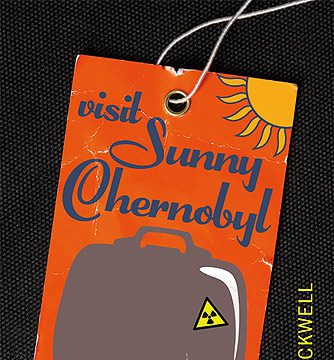Andrew Blackwell’s choice of places to visit, chronicled in his book Visit Sunny Chernobyl and Other Adventures in the World’s Most Polluted Places, to quote a friend, is “plurally depressing”: Chernobyl, the oil sands of Alberta, Port Arthur in Texas, the Pacific Garbage Patch and the sorry saga of the Yamuna, river-turned-sewer.
Fortunately, Blackwell writes a carefully tempered prose. Each essay distances us carefully from newzak and from the oft-repeated image and chooses instead to explain clearly how a Chernobyl or a Port Arthur oil spill could have occurred, separating it all the while from corporate and government spin. He is also adept at reproducing the small falling away that occurs when places rise up to meet you, and truthfully chronicling the moment when maps fade and received information becomes useless, when he must rely on conversation and incidental detail to capture some sense of the things that will elude one on walking into a place for the first time.
Blackwell’s other gift is an endless capacity for drollness. His innocent questions cause Greenpeace activists to clam in much the same style as corporate spokespersons. A couple of Oberlin graduates and environmentalists hop on to the ship that takes them to the Pacific, and one announces that he wants to be an adventurer, a ‘rakish rogue’ to be precise. This deadpan devastation is unsparing, and includes the author’s collapsing romance with a woman known only as the Doctor, his own Patrick O’Brian syndrome, and one priceless moment when he skids across the road in moral panic to avoid a bunch of jaywalking ducks immediately after having laughed at an Alberta company’s attempts at spinning some disaster with migratory birds into PR advantage.
When the moments of clarity arrive, they are impressive. His insight is that Western environmentalism often rests, ironically, on the same distinction between nature and human that powers the ideas of industry and progress, that it is doomed to ‘gauzy, prelapsarian yearnings’ rather than being ‘robust and engaged’. He seems to find that engagement among a motley group of sadhus and activists marching upon Delhi to protest the mismanagement of the Yamuna.




